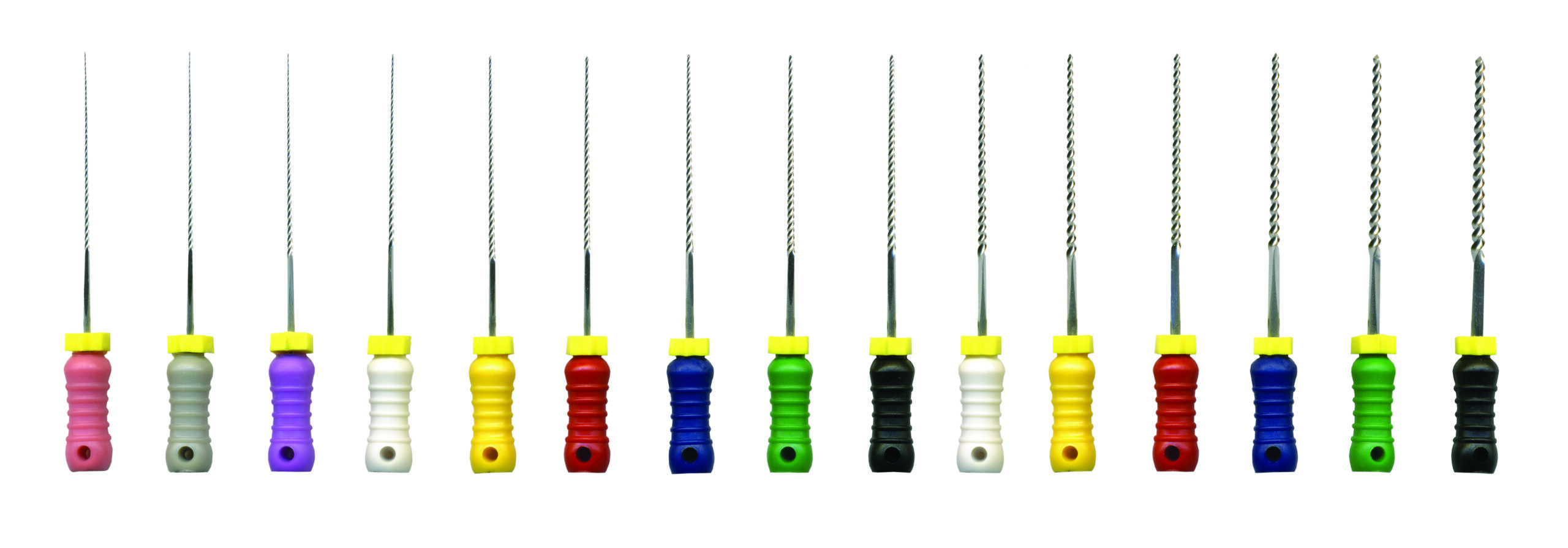
Table of Contents
Get Dental Catalogue PDF On Your Email
Single‑Use vs. Reusable Endodontic Files: Cost, Safety & Efficiency
When it comes to endodontic files, dentists often balance cost savings with patient safety and treatment effectiveness. In Canada—and globally—there’s ongoing debate: should files be used once and discarded, or carefully sterilized and reused?
electronic apex locators and glide path instruments
Key Considerations
- Cleaning and Sterilization Challenges
- Root canal instruments possess microscopic crevices that can trap debris and microorganisms, which are often impossible to eliminate via standard sterilization. Single-use files guarantee no cross-contamination
- Infection Risks, Including Prion Transmission
- Though rare, the potential spread of prion diseases like Creutzfeldt-Jakob Disease through reused instruments has led to single-use mandates in places such as the UK and Alberta, Canada
- Mechanical Performance & File Fatigue
- Repeated sterilization weakens file strength, reduces cutting efficiency, and increases the risk of separation—especially for NiTi rotary files
- Safety vs. Cost Trade-offs
- Studies show most Canadian dentists reuse files multiple times, citing cost as primary barrier to single-use adoption
Cost Comparison
- Single‑Use
- Higher per‑tooth cost, but lower processing overhead (no cleaning, no failure cost, no liability risk).
- Eliminates expense of reprocessing labor and potential legal consequences from cross-contamination .
- Reusable
- Lower material cost, but demanding on time and resources (cleaning, inspection, sterilization).
- Failure to observe strict protocols can lead to treatment failure or infection—costly in the long term
Efficiency & Clinical Workflow
- Single‑Use
- Simplifies clinical flow—no need for decontamination protocols, fewer errors, and reduced handling stress.
- Dentists often report a smoother workflow and better confidence in instrument sharpness
- Reusable
- Requires structured systems for cleaning, storage, and inspection before each reuse.
- Lengthier procedure times and room for human error in multistep sterilization
Regulatory Standards & Best Practices
- Canadian Dental Association (CDA) and American Association of Endodontists (AAE) haven’t mandated single-use, but local regulations (like in Alberta) enforce it where manufacturer labels indicate “single use”
- International bodies like the CDC and WHO strongly lean toward single-use for high-risk endodontic instruments
Practical Recommendations for Dentists
- Prioritize safety and liability protection—use files once when labeled “single-use.”
- Track file usage—document the number of reuses and skip reuse beyond 4–5 times to reduce fracture risk
- Invest in quality NiTi rotary sets—they’re durable and cost-effective when reused responsibly.
- Implement a rigorous inspection and sterilization protocol—mandatory for any reusable file.
- Clearly communicate with patients about procedures and instrument usage for trust and transparency.
Conclusion
| Approach | Pros | Cons |
|---|---|---|
| Single‑Use Files | Maximum safety, simplified workflow, and compliance with single-use legislation. | Higher per-case cost. |
| Reusable Files | Lower material cost, but require systematic sterilization protocols and risk potential failures. | Time-consuming processes, increased liability, and less reliable cutting performance over time. |
For Canadian dental practices, especially where single-use is mandated (like Alberta), opting for single-use endodontic files is often the safest, most efficient approach. Even outside mandatory regions, many modern clinics prefer single-use for clarity, efficiency, and patient confidence.
If you’re ready to streamline your practice, explore and buy endodontic instruments in Canada from our online store. Carrot HCP brings you top-tier quality, safety, and reliability—your trusted partner in dental instruments.

